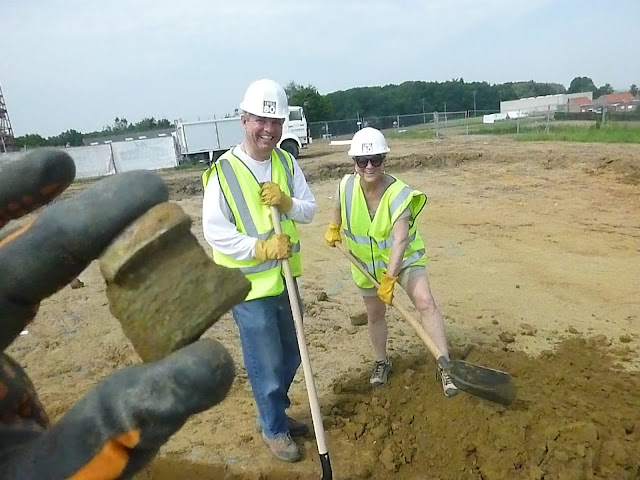I spent the morning on some rather mundane trenches. Pretty much just digging square holes with a nice cut face on one side to show changes in soil color. Here are a couple of mystery objects that came out of the next trench over. The bullet is for scale. Guesses?
Trenches are usually spotted when the initial de turfing and scraping is done. Here a squiggly trench - or maybe a squiggly something else - has been highlighted with spray paint. I believe a wider part of this trench contained a mostly intact horse skeleton.
In the afternoon I was back working on the things I can't show you. Helping define the perimeter of a burial site. It is careful work on very complicated features. Since ID tags did not seem to be in common use you would have to get very lucky to make a positive ID on any of these bodies. One or two have had personal items that just might help us out but these take careful study. But even being able to say with some confidence that it was a soldier from a certain country, who probably died in a certain year is worth something. They will eventually rest in a grave yard surrounded by their comrades instead of under a wooden stake painted orange.

















































